How, when and what to feed raspberries in the spring for a good harvest
To grow a good raspberry harvest, it is important to follow agricultural techniques and care rules: water the bushes, loosen the soil, trim the shoots. Gardeners also do not forget about spring feeding. Let us consider in detail how to feed raspberries in the spring and what is needed for this.
Goals of spring feeding of raspberries
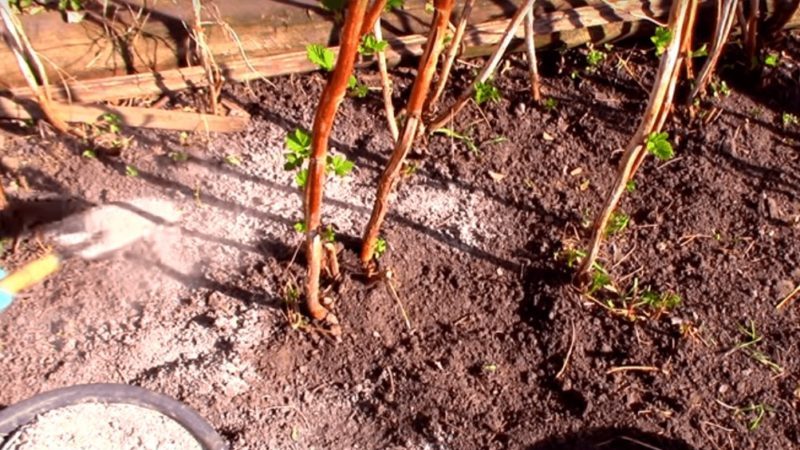
With the arrival of spring, raspberries wake up - the growth of young shoots and the root system is activated. After winter, the plant is weakened, and in order to give it strength for development, gardeners provide spring feeding. Organic and mineral fertilizers are applied, which strengthen the raspberry’s immunity.
Another purpose of spring feeding is protection from diseases and pests. To avoid the appearance of raspberries, moths, and aphids, gardeners spray berry bushes with protective chemical, biological, and folk remedies.
When to fertilize in spring
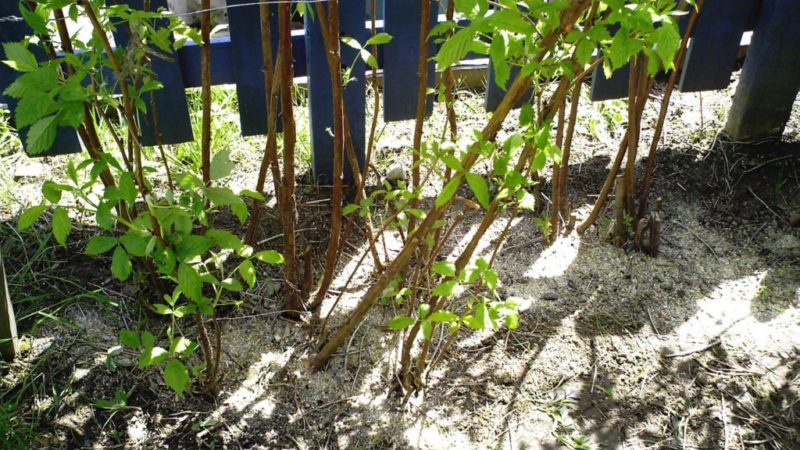
When to feed garden raspberries? It is recommended to do this after all the snow has melted. The timing of fertilizing depends on the region. In the south of the country this is approximately mid-April, in the middle zone and in the northern regions - early May.
The best time to fertilize is after rain. Moisture serves as a conductor of nutrients; The more it is, the better the vitamins and minerals are absorbed. If the spring turns out to be dry, the bushes are watered generously with warm water before fertilizing. It is recommended to do this in the morning or evening when there is no sun.
If raspberries are grown on low-fertility soils, in the spring, fertilizers are applied twice: in April and two weeks after the first feeding. On fertile lands, they limit themselves to one feeding. A proven method helps determine the readiness of the soil: stick a stick into the ground. If it goes in without problems and stands straight, it means the ground has thawed. If not, it is recommended to wait another 2-3 days and repeat the procedure.
How to feed raspberries in spring
In spring, raspberries need organic and mineral fertilizing. The main thing is to determine the dosage correctly so that the plant does not receive an excess of vitamins and nutrients. Let's look at popular fertilizers for feeding raspberries in the spring.
Organic fertilizers
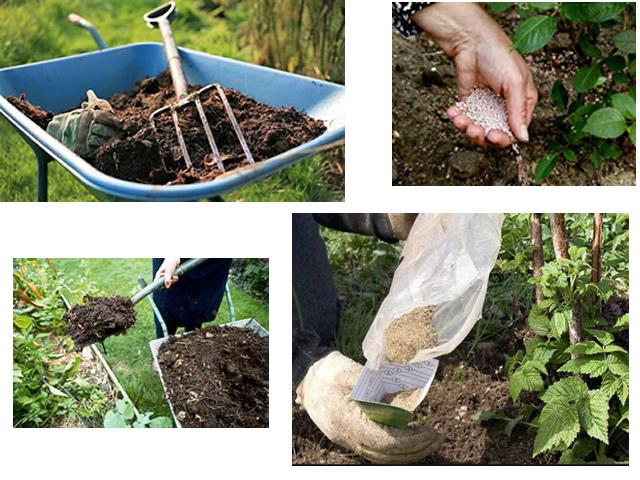
In spring, raspberry fields are fertilized with slurry or mullein diluted with water to a liquid state. Organic matter stimulates the development of greenery and gives the roots the missing elements. If there is no mullein, summer residents add bird droppings or peat.
It is important to follow the dosage and methods of application:
- chicken droppings are dissolved in water and the liquid is poured over the bush, about 5 liters are needed per bush;
- slurry or compost is applied at the root, per 1 square meter. m takes 4-6 liters;
- To prepare a mullein solution, use 10 liters of water and 1 shovel of mullein.
When adding organic matter, try not to get it on the trunk, so as not to cause burns. After the procedure, mulching is carried out to preserve the effect of the fertilizer longer. The raspberries are sprinkled with straw crumbs or mowed grass. When decomposed, mulch serves as an additional organic fertilizer.
Mineral fertilizers
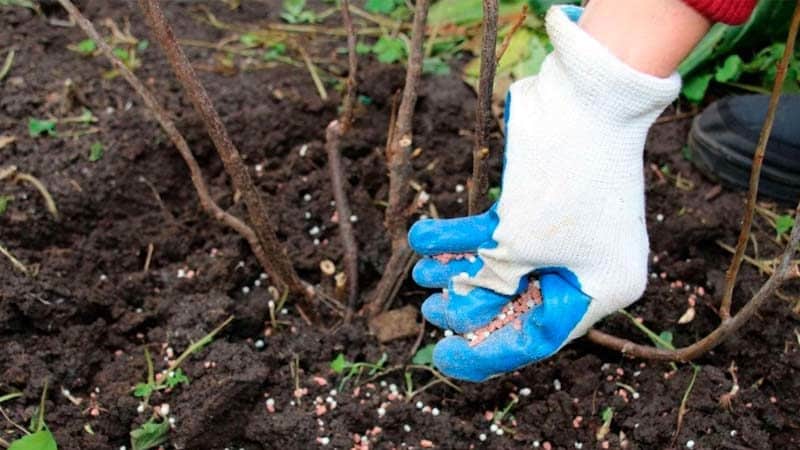
Mineral fertilizers are responsible for the development of berries; the taste of raspberries and their appearance depend on them. spring plant needs nitrogen, potassium and phosphorus.They are introduced into the soil before buds open, in April or May.
It is recommended to pay special attention to nitrogen. It forms leaf mass, protects against diseases and pests, and increases the fruiting period of raspberries. For processing, urea (urea) is used, a working solution is prepared from 10 liters of water and 20 g of fertilizer. The bush is watered at the root, then the ground is sprinkled with limestone, since the solution oxidizes the soil (500 g per 1 liter of water). If limestone is not available, gardeners use dry wood ash.
It has a beneficial effect on raspberries and superphosphate - a nitrogen-phosphorus complex. Fertilizer normalizes plant metabolism, inhibits aging, and improves taste. For spring fertilizing, prepare a concentrate - 350 g of fertilizer is poured into 3 liters of boiling water. After dissolving the granules, the concentrate is diluted with water in a ratio of 1:10. Apply the solution 1-2 times in the spring, depending on the condition of the soil. Before applying fertilizing, the soil is loosened.
Attention! A simple and effective mineral fertilizer is wood ash. It improves soil structure and stimulates flowering. A glass of ash is diluted in 10 liters of water, mixed and infused for a week. One bush requires 2-3 liters of solution.
Ready-made fertilizers
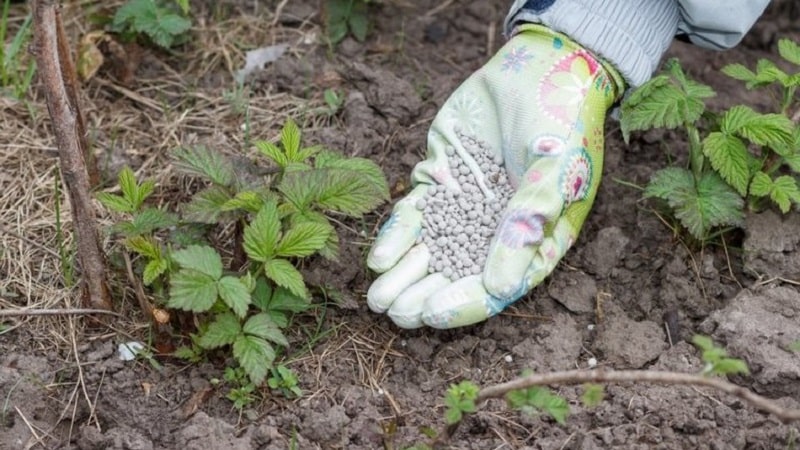
Purchased fertilizers are easy to use; summer residents do not waste time mixing different elements; they just need to buy a ready-made composition.
For spring feeding, use the Zdraven Turbo complex. It is suitable for root and foliar feeding and is available in a convenient liquid form. The drug is valued for its rich mineral composition (nitrogen, phosphorus, potassium, manganese, copper, zinc, cobalt) and the absence of chlorine, which reduces the immunity of raspberries. To prepare the working solution, use 10 liters of water and 15 g of the substance. For 1 sq.m requires 7-10 liters. “Zdraven Turbo” is also used for foliar feeding: 10 g of the substance is diluted in 10 liters of water and sprayed on raspberries.
Ready-made fertilizer “Gumi-Omi” is also popular. It contains nitrogen, phosphorus, boron, copper, sodium humates, and organic matter. The granules are dissolved in water, and the resulting mixture is watered over the raspberry tree 1-2 times in the spring.
Purchase “Gumi-Omi” and “Zdraven Turbo” in specialized gardening stores. Gardeners also use ready-made products - “Gumate + 7 Iodine”, “Krepysh”, “Berry bushes”.
Folk recipes
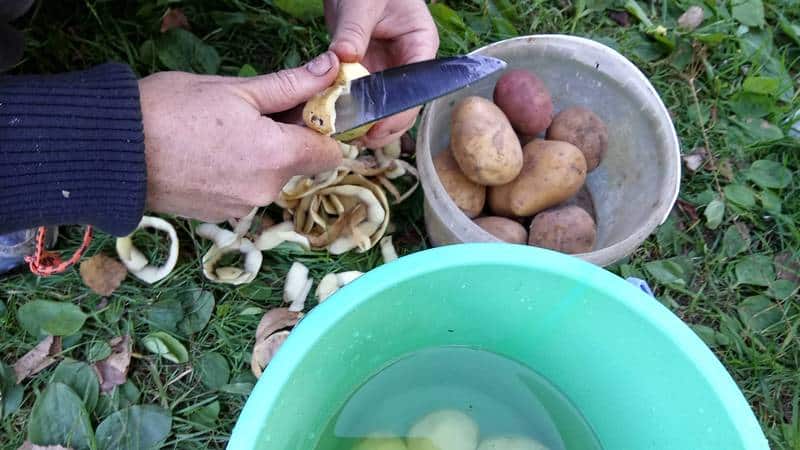
Folk recipes for feeding raspberries are the most accessible. Summer residents use potato peelings: pour boiling water over them, leave for 2-3 days and water the plants with the resulting solution. This supplement is safe, free and easy to prepare. Potato peelings are used both in dried and rotted form.
Yeast fertilizers help increase disease resistance and develop the root system. To prepare dry fertilizing, you need 10 g of yeast, 100 g of sugar and 10 liters of warm water. The solution is infused for two hours and diluted with water in a ratio of 1:5. Water the raspberry tree on a warm day, preferably in the evening, so that the soil warms up. Use the solution immediately after preparation; it is not suitable for storage.
Another effective folk remedy recipe is onion solution.. Add 50 g of onion peels to 10 liters of water. Leave for 14 days and water the bushes. The solution nourishes raspberries with potassium and protects them from diseases and insect pests.
Choosing fertilizer for a good harvest
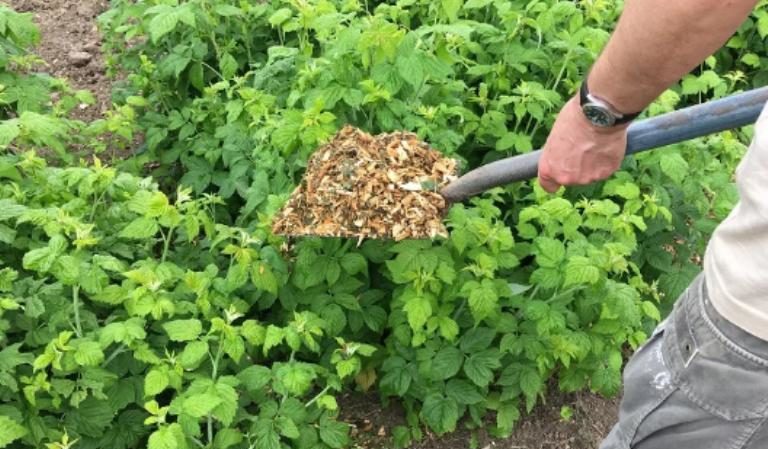
To get a good harvest, it is recommended to fertilize raspberries with complex fertilizers.
For preparation, you need 10 liters of water, 2 liters of diluted mullein, a matchbox of urea.The components are mixed together and watered over the raspberries. Fertilizer replenishes the lack of nutrients and prepares the plant for flowering. This composition is also used for spraying - it protects the bushes from insects. When cooking, it is important to follow the proportions, otherwise the raspberries will get severe burns.
What to feed before flowering
Before flowering, raspberries can be fed with ammonium nitrate. For 10 liters of water, 30-40 g of the substance are required. After fertilizing, the raspberry tree trunk circle is mulched with compost or humus.
Compost enriches the soil and contains potassium, humus, phosphorus, iron and nitrogen. It is easy to make compost mass by mixing fruit and vegetable peelings, manure, straw, hay, shavings, wood and leaves.
Attention! When adding any organic and mineral components, it is important to remember their compatibility. For example, sodium, calcium and ammonium nitrate are not compatible with powdered superphosphate. And calcium nitrate does not get along well with compositions containing sulfur.
How to apply fertilizer correctly
Before applying fertilizing, it is recommended to clean up the garden beds: remove and burn garbage, weeds, and the remains of last year’s plants. Shrubs trimmed, remove old and dry branches, leaving healthy and young green shoots. Summer residents also remove shoots and dry leaves. Before and after fertilizing, the soil is loosened - the procedure improves the air and moisture permeability of the soil.
Gardeners regularly inspect raspberries. If yellow spots appear on the leaves, this indicates a lack of potassium; dry branches - a lack of nitrogen or phosphorus. Apply fertilizer to moist soil. If these are root fertilizers, water the plant at the root or in the trunk circle.If foliar - spray and spray at a distance of 20-30 cm from the bush.
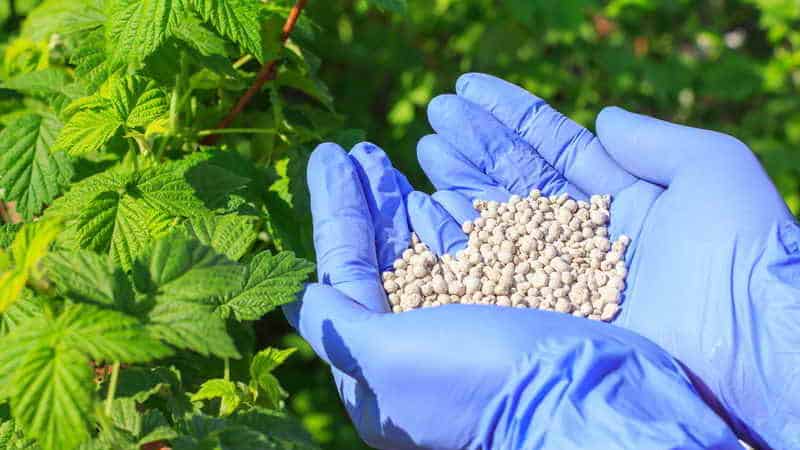
Spring feeding of raspberries when planting
Raspberries are planted in early May. The soil is dug up and manure or compost is added. Also, for the first feeding, folk remedies or ash solution are used.
After 2-3 weeks, foliar fertilizers are also used: seedlings are sprayed with protective agents. For example, a solution of ammonia: 10 liters of water requires 30-40 g of the finished substance. The solution is stirred, about 2 liters are poured under one plant. The product protects raspberries from aphids, sawflies, moths, and mole crickets. Complex fertilizers are applied only 1-2 months after landings.
Conclusion
How handle and fertilize raspberries in the spring? For early treatment, organic and folk remedies are chosen: an infusion of onion peels or potato peelings, an infusion of mullein or chicken droppings. Of the more recent mineral and complex fertilizers, they prefer “Zdraven Turbo”, “Krepysh”, urea, and ammonium nitrate.
Fertilizers are applied after the snow melts and the air temperature warms up to +10°C. Before fertilizing, water the plants abundantly - moisture promotes better absorption of nutrients. It is also recommended to loosen the soil and mulch the bushes after fertilizing. Hay, grass, sawdust, and fallen leaves are used as mulch.
The author is very confused, in different paragraphs he suggests different fertilizers for the same season. I pulled out information from various articles. But in principle, all the recommendations are correct.
Thank you, we will double-check the information on fertilizers.